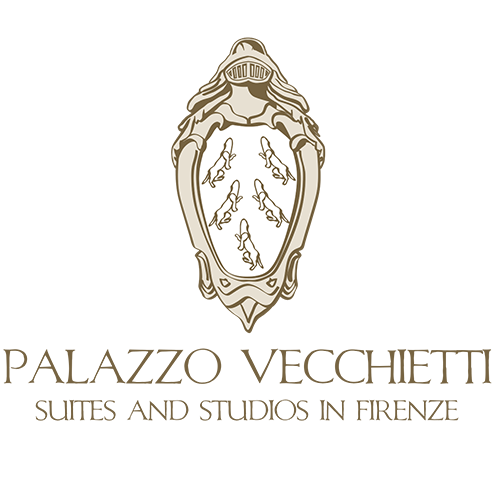



“And take a look at that Nerli and his companion del Vecchio, Both so content in the nude... and their women all strung out.”
That's how Dante Alighieri, in the 15th Canto from his masterpiece, Paradiso, preserved for all time the memory of the Vecchietti family, the exact name of our historical palace and hotel.
The Vecchiettis were wealthy fur traders and merchandisers. They were also one of the first families to establish themselves in the capital of Tuscany, Florence. The family was likewise politically powerful—so much so that some of the family line held very important offices in the Florentine Republic.
The Vecchietti family was so fabulously wealthy that their properties covered an entire block in the center of Florence (Florence) extending from the arch of Piazza della Repubblica all the way to Palazzo Strozzi.
It was here that in 1578 the senator and patron of the arts Bernardo Vecchietti asked Giambologna, whom he had hosted and subsidized since his arrival in Florence, to construct his residence: Palazzo Vecchietti.
Giambologna built this historical palace incorporating in the building's center the beautiful cloister that was part of the construction that was present before. From its first floor, it overlooked a fifteenth-century small-scale lodge embellished with fine graffitos that probably were the works of Lippi and di Andrea del Castagno. Even today, in the inside of the hotel, one may view the remains of an even older structure, an extremely old Bizantina Tower.
All the villas of the family, including, naturally, Palazzo Vecchietti, were locations where troves of prestigious works of art were housed—including the Sant’Agostino nello Studio, Botticelli's masterpiece found today in the Uffizi art gallery.
On the corner between the façades of the historical palace, Giambologna positioned the Stemma della Famiglia (the family's coat of arms), that consists of five silver ermines on a blue background, a symbol of incorruptible purity, and a bizzare flag carrier in the form of a little devil made of bronze. The original of this artwork is in Palazzo Vecchio.
According to legend, there was once found here a tabernacle where St Peter of Verona frequently gave sermons. One day, during a sermon, the Devil interrupted the preaching by frightening a black horse that then dispersed the congregation listening to the saint's address. Peter managed to calm down the faithful and went on preaching to them. From that day on, people began to call the place the Canto del Diavolo (Song of the Devil). Giambologna was so inspired by this story, he designed the flag carrier according to it.
Palazzo Vecchietti, throughout the centuries, has suffered through pillages, wars, floods, and diverse political and economic historical movements. The palazzo has passed from one owner to another finally being possessed by the Nencini, Giusfredi and Magni family. It was also entrusted to the Belle Arti so that it could be restored in accordance with the most precise details which faithfully imitated the original design.
For these reasons Palazzo Vecchietti still conserves today artistic remains of the highest value. Cornices, furnishings, furniture, and perfectly regenerated medieval fireplaces blend today with modern accoutrements in the common areas and in our rooms and suites. They express a unique and matchless mood not found anywhere else.